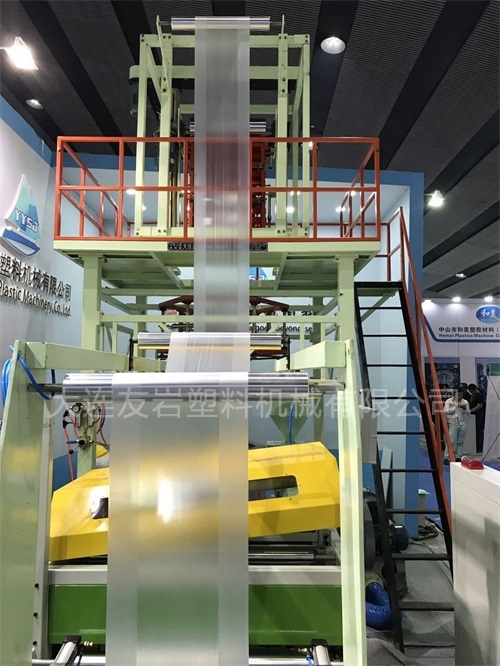
Dalian Youyan Plastic Machinery Co., Ltd.
Couplet: Feng Manager
Phone/fax:086-0411-86260347
Hand:18624289888
13604263838
Mail box:21272059@qq.com
Network access:bosuanji.cn
Address: Chinese Lushunkou District of Dalian City, the three streams town (take Tuchengzi Dalian to Lushun Road westbound vehicle airport about 200 meters in front of about 100 meters)
How to make a reasonable control of the temperature of the dalian blowing machine to make the extruded film sturdier
Film appear fold blown film machine, its basic reason is that film transverse thickness uneven, even a very small, also can cause obvious fold after accumulation, become thin to experimental film, film tear test, friction coefficient and other measurement data.
Solution: to reduce melt temperature, it can effectively reduce the fluidity of the melt, and it is stronger when the die is extruded, and the film cooling is not uneven due to the cooling wind. Reducing cooling air volume or mediating cooling wind inhomogenize. The Angle of the person word board is too big, make the film to be compressed in a short time, the problem that appears fold, should reduce the Angle of the person board appropriately. The film orifice is not uniform, should be mediating the die, so that it is in the vertical state. The winding roller tension is too large to fold the membrane. Roll tension should be reduced properly.
According to the melting theory of plastic, the extruder screw of blowing film is divided into three parts: the feeding section, the melting section and the homogenization section. At the end of the feeding segment, at the beginning of the melting section, according to the melting theory, its temperature should be the viscous temperature. Variety of blown film temperature viscous flow respectively, PP: 164-175 ℃, PE: 105-135 ℃, PA: 195-210 ℃.
At the inlet of the feeding section, it is hoped that the temperature will be lower and the resin will not be stuck to the feeding port. In addition, the resin in the feeding section is constantly compressed, and the air will be expelled from the feeding port. According to the construction of the equipment, the feeding port is not electrically heated, but the temperature of the feeding mouth is about 50 to 90 degrees. In this way, the temperature of the feeding section is determined. At the entrance 50-90 degrees, the end is the melting point or the viscous flow temperature, which can be defined as the temperature profile heating.
At the beginning of the melting section, the temperature reaches the viscous flow temperature to melt, and for the crystalline resin, the viscous flow temperature is equal to the melting point temperature. Compression, and then increasing melt layer, it needs to temperature rising, to make the resin molecular chain length, different thermal motion energy of the polymer are fused, and thus established after the end of the period of temperature to the melting, can be classified as other parts in the segment is linear heating up.
In the homogenization section, the melting and constant temperature output melt of the temperature can be kept constant, or the end temperature of the melting segment is slightly higher (2-5 degrees). For the film film, the temperature of the film is low, but it can not be lower than the viscous flow temperature, which is convenient for the film and the normal film. When the melt comes out from the die, it must have a certain viscosity, not rupture film, collapse film and so on. In general, it is about 10-30 degrees lower than the end of the homogenization segment, and it can be considered as an equal difference temperature drop from homogenization segment to touch temperature.
